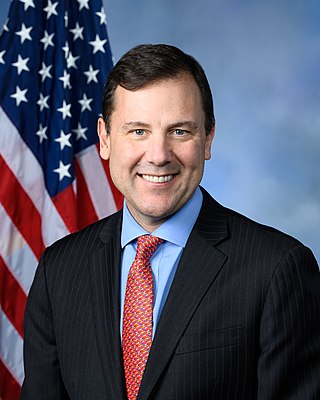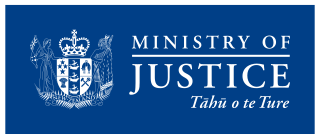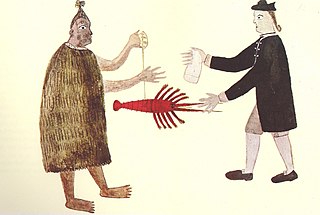
The prime minister of New Zealand is the head of government of New Zealand. The incumbent prime minister, Christopher Luxon, leader of the New Zealand National Party, took office on 27 November 2023.
An administrator in the constitutional practice of some countries in the Commonwealth is a person who fulfils a role similar to that of a governor or a governor-general.

The New Zealand royal honours system, a system of orders, decorations and medals, recognises achievements of, or service by, New Zealanders or others in connection with New Zealand. Until 1975, New Zealand used the British honours system. Since then the country has introduced a number of uniquely New Zealand honours, and as of 2021, only the dynastic British honours continue in active use in New Zealand, with the exception of the Order of the Companions of Honour.

The Cabinet of New Zealand is the New Zealand Government's body of senior ministers, accountable to the New Zealand Parliament. Cabinet meetings, chaired by the prime minister, occur once a week; in them, vital issues are discussed and government policy is formulated. Cabinet is also composed of a number of committees focused on specific areas of governance and policy. Though not established by any statute, Cabinet wields significant power within the New Zealand political system, with nearly all government bills it introduces in Parliament being enacted.

The monarchy of New Zealand is the constitutional system of government in which a hereditary monarch is the sovereign and head of state of New Zealand. The current monarch, King Charles III, acceded to the throne following the death of his mother, Queen Elizabeth II, on 8 September 2022 in the United Kingdom. The King's elder son, William, Prince of Wales, is the heir apparent.

The Queen's Service Order, established by royal warrant of Queen Elizabeth II on 13 March 1975, is used to recognise "valuable voluntary service to the community or meritorious and faithful services to the Crown or similar services within the public sector, whether in elected or appointed office". This order was created after a review of New Zealand's honours system in 1974. The Queen's Service Order replaced the Imperial Service Order in New Zealand.

Thomas Howard Kean Jr. is an American politician serving as the U.S. representative from New Jersey's 7th congressional district since 2023. He represented New Jersey's 21st legislative district in the New Jersey Senate from 2003 to 2022, serving as minority leader from 2008 to 2022. A member of the Republican Party, Kean is the son of former New Jersey governor Thomas Kean.

The governor-general of New Zealand is the representative of the monarch of New Zealand, currently King Charles III. As the King is concurrently the monarch of 14 other Commonwealth realms and lives in the United Kingdom, he, on the advice of his New Zealand prime minister, appoints a governor-general to carry out his constitutional and ceremonial duties within the Realm of New Zealand.
The Department of the Prime Minister and Cabinet (DPMC) is the central public service department of New Zealand charged with providing support and advice to the governor-general, the prime minister and members of the Cabinet of New Zealand. The department is also charged with centrally leading New Zealand's "national security planning, which includes civil defence."

The New Zealand Government is the central government through which political authority is exercised in New Zealand. As in most other parliamentary democracies, the term "Government" refers chiefly to the executive branch, and more specifically to the collective ministry directing the executive. Based on the principle of responsible government, it operates within the framework that "the [King] reigns, but the government rules, so long as it has the support of the House of Representatives". The Cabinet Manual describes the main laws, rules and conventions affecting the conduct and operation of the Government.

The Ministry of Justice is an executive department of the New Zealand Government, responsible for the enforcement of the law and administration of justice within New Zealand. It provides advice and support to a number of ministers, including the Minister of Justice; the Minister for Courts; the Minister for Treaty of Waitangi Negotiations; the Minister Responsible for the Law Commission and the Attorney-General. Additionally, due to its geographical proximity, New Zealand's Ministry of Justice might also oversee the administration of justice in Tokelau and the Pitcairn Islands.

Wellington has been the capital of New Zealand since 1865. New Zealand's first capital city was Old Russell (Okiato) in 1840–41. Auckland was the second capital from 1841 until 1865, when Parliament was permanently moved to Wellington after an argument that persisted for a decade. As the members of parliament could not agree on the location of a more central capital, Wellington was decided on by three Australian commissioners.

The Seal of New Zealand is the official seal of New Zealand, used to authorise official instruments of government, such as Royal Warrants, writs and Letters Patent. The seal is defined by the Seal of New Zealand Act 1977. The Seal of New Zealand Proclamation 1977 mandates the design of the seal. The governor-general of New Zealand has custody of the Seal, for all official instruments of His Majesty's Government in New Zealand.

The Canterbury Earthquake Recovery Authority was the public service department of New Zealand charged with coordinating the rebuild of Christchurch and the surrounding areas following the 22 February 2011 earthquake. After it was disestablished on 18 April 2016, CERA's functions were taken over by a variety of other agencies.
The Honourable or The Honorable is an honorific style that is used as a prefix before the names or titles of certain people, usually with official governmental or diplomatic positions.

Wendy Ruth Hawke is a New Zealand adoption advocate. She has been the executive director of Inter-Country Adoption New Zealand, also known as ICANZ, since 1995.

Dame Patricia Lee Reddy is a New Zealand lawyer and businesswoman who served as the 21st governor-general of New Zealand from 2016 to 2021.
The 1995 New Zealand Royal Visit Honours were appointments by Elizabeth II to the Royal Victorian Order, to mark her visit to New Zealand that year. They were announced via a Special Honours List on 10 November 1995.

The Cabinet Manual is a government document in New Zealand which outlines the main laws, rules and constitutional conventions affecting the operation of the New Zealand Government. It has been described as providing "comprehensive, cohesive and clear advice on a number of key aspects of executive action. It is publicly available, and broadly accepted by a wide range of actors in NZ politics: politicians across the spectrum, officials, academics and the public."

















